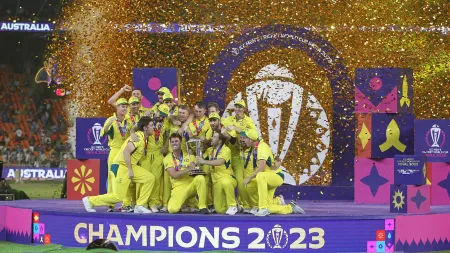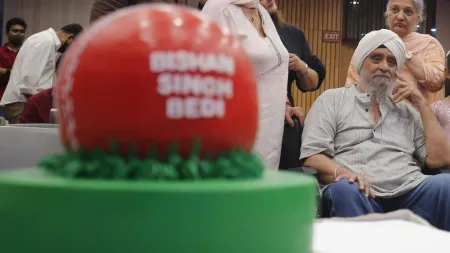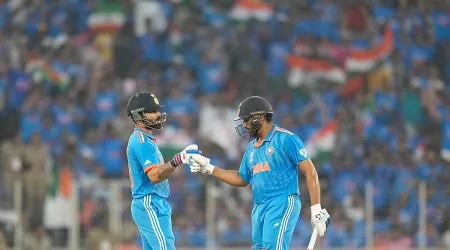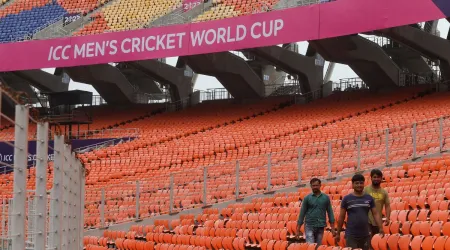- India
- International
Mohun Bagan-ATK merger: Identity crisis or need of the hour?
India's most illustrious football club has been brought into the ISL fold. But the Mohun Bagan faithful are hardly a flock of sheep that’ll obediently follow Atletico de Kolkata (ATK) into the lair of professionalism and modernity without asserting their identity in the ISL. The Indian Express looks at Indian football's most anticipated merger and counts the reasons that might stop it from combusting.
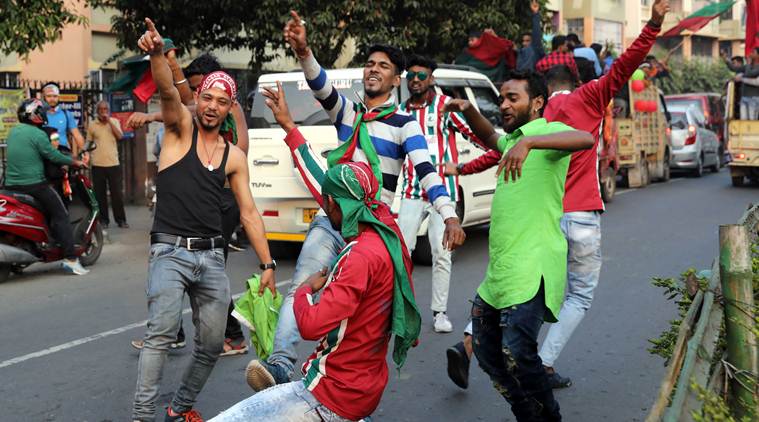 Supporters before East Bengal and Mohun Bagan I league derby match at Salt Lake stadium on Sunday. (Express photo by Partha Paul)
Supporters before East Bengal and Mohun Bagan I league derby match at Salt Lake stadium on Sunday. (Express photo by Partha Paul)
A visit to the Mohun Bagan ground on any matchday is an opportunity to witness love at close quarters. It’s the same at the East Bengal ground, a short walk away from the Bagan tent. Bengalis are born either Mohun Bagan or East Bengal. The love for their respective teams has an adrenaline rush; passion mixed with aggression. Fans are Kolkata football’s biggest stakeholders.
Listen to our podcast | What the Mohun Bagan-ATK merger means for both the clubs
It’s not all sweet sonnets for the Bagan supporters though; they best express their love in Kolkata by turning salty. “S… club ta ke beche dilo (bloody hell they sold our club)… that was our initial reaction,” says Mohun Bagan fan Kingshuk Ghosh. Swearing is an integral part of on-field football viewership – any sport for that matter. Kingshuk just conformed to the norm, when he spoke about his club’s merger with ATK FC, ceding 80 per cent of control to the RP-Sanjiv Goenka Group.
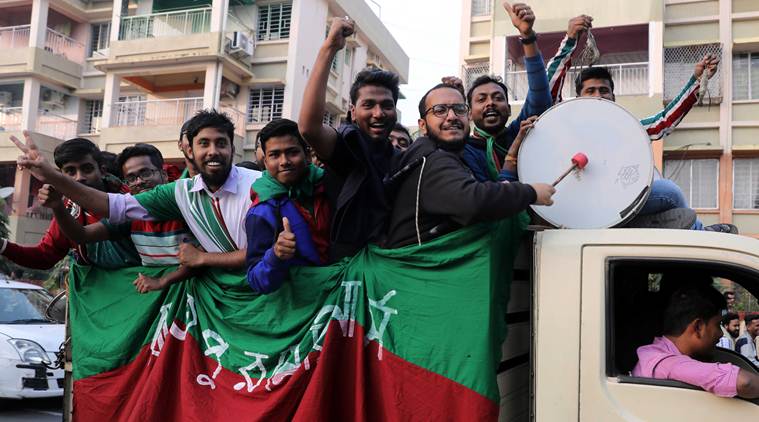 Little wonder then that the fans are by and large happy and convinced that football will be run in a professional way by the new management. (Express photo by Partha Paul)
Little wonder then that the fans are by and large happy and convinced that football will be run in a professional way by the new management. (Express photo by Partha Paul)
In 1998, when Bagan and the UB Group had entered into a fifty-fifty shareholding after forming a company to run the football team, protests arrived at the club tent’s doorstep. A special officer had to be appointed to keep the peace. This time it’s a takeover and yet, fans are not protesting. They, in fact, are counting the positives. To paraphrase Bob Dylan, times they’ve changed.
Or, have they? Kingshuk is empathic: “To start with, we didn’t have a clear idea about how the merger would work. But gradually it has dawned on us that this might help change the whole set-up for the better. See, standing on the terraces, we will still shout, ‘joy Mohun Bagan (victory to Bagan)’. We will never shout, ‘joy ATK Mohun Bagan or Mohun Bagan ATK’, or whatever the merged identity is called.”

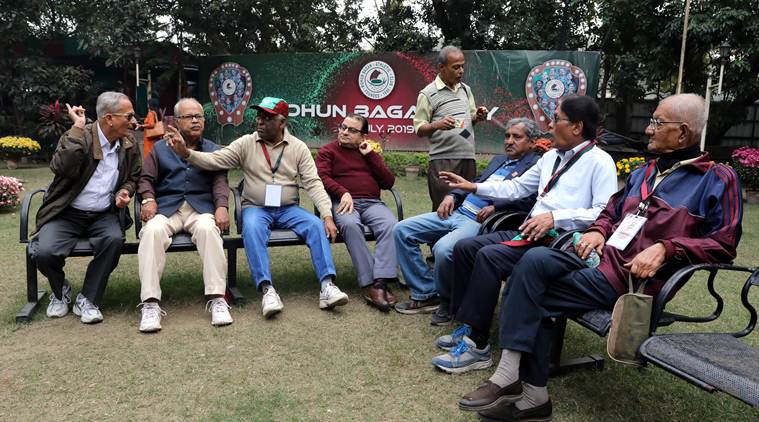 Mohun Bagan Supporters at the Club tent. (Express photo by Partha Paul)
Mohun Bagan Supporters at the Club tent. (Express photo by Partha Paul)
Going by the Bagan supporters, the merger has laid bare the tattered fabric of the club officialdom. “The club officials, both Bagan and East Bengal, have failed to use the brands. Otherwise, it wouldn’t have come to this. See, the I-League is now a second-string tournament. But for far too long, the officials were in denial. They realised it a little too late that a club playing in the I-League wouldn’t attract big sponsors, notwithstanding its heritage. Eventually, selling of stakes became their only option,” Amit Ghosh, a researcher, and more importantly, a part of the Mariners fan club, offers the supporters’ perspective.
He is right on the money, given that even 12 months back, Bagan and East Bengal were busy foisting a combined resistance by the I-League clubs and taking their ‘fight’ against the ISL to the All India Football Association (AIFF). The majority of the club officials were an impediment to progress, forcing the clubs to play catch-up all the time.
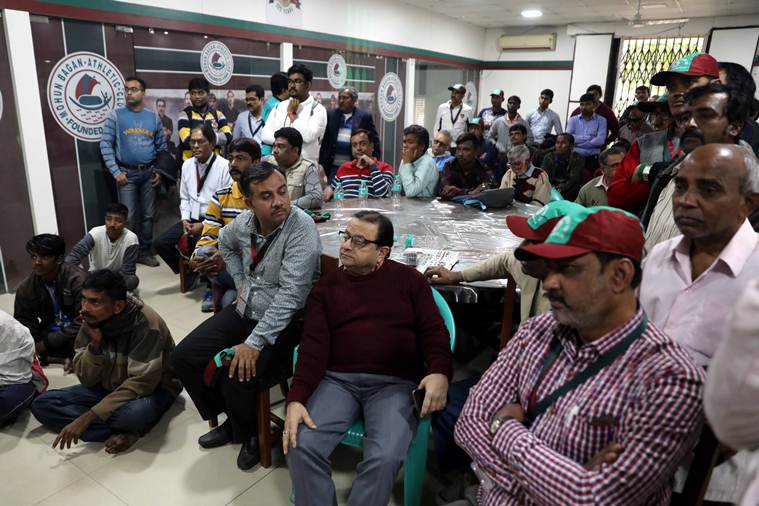 In pre-independent India, Bagan had been a symbol of patriotism.
In pre-independent India, Bagan had been a symbol of patriotism.
Little wonder then that the fans are by and large happy and convinced that football will be run in a professional way by the new management. The real upside is that now Bagan will play in the top-tier. They will yet again start wooing national team players. Like ATK midfielder Pronay Halder, spoke of how he had been missing the Kolkata derby and of his joy to play for Bagan again. “The harsh reality was, we would have again lost players like Nongdamba Naorem and Joseba Beitia to the ISL next season if we were still playing the I-League. Every good player in the I-League is making a switch to the ISL, for the right reasons. They have spoken about giving discounted tickets to Bagan members. So I hope fans won’t be priced out,” Mayukh Chatterjee, another Bagan die-hard drives home his point.
All positive factors aside, Bagan fans are still taking the merger with a pinch of salt, trying to uphold the club’s superiority even in the takeover. “ATK are the biggest winner. They might have won the ISL twice but in Kolkata, few care for them. Our club and fans like us will make ATK popular.” The sly dig is probably the order of the day. Bagan fans also have a warning for the football team’s new bosses; “Don’t be foolish enough to promote the ATK brand over our heritage.”
World War II was at its peak and Denis Compton was in Calcutta, serving the army that fought on the Eastern Front. Central India actually was the first port of call for the England cricket legend, where he turned up for Holkar in a Ranji Trophy match. In Calcutta, Compton wanted to play football for Mohun Bagan. Arsenal’s official website records his entry to the club as a 14-year-old amateur in 1932.
In pre-independent India, Bagan had been a symbol of patriotism. A legend was born after the 1911 IFA Shield final that the green-and-maroon had won defeating East Yorkshire Regiment. The Immortal XI were as celebrated as prominent freedom fighters. Bagan duly had a policy of not having any overseas player in their team. But Compton wasn’t just another overseas sportsman. So, as the story goes, the then Bagan hierarchy had a meeting to discuss the great man’s overture. By then, though, the Mahatma had launched the Quit India movement. The club management expressed their regrets to Compton. Bagan only lifted their ‘overseas embargo’ in the early 1990s, when they signed up Chima Okorie as their first-ever foreign player.
Could Mohun Bagan club’s members have done more to prevent the merger with ATK #SundaySpecial https://t.co/3KQ6WKbppe pic.twitter.com/jIVjdxctzd
— Express Sports (@IExpressSports) January 26, 2020
Sanjiv Goenka’s press statement was carefully worded in trying to match up to this reverential history. “RPSG Group which has a 200-year-old legacy is humbled and honoured to welcome Mohun Bagan with folded hands and open arms to the RPSG family.” RP-Sanjiv Goenka Group owns and runs the ATK FC in the Indian Super League (ISL). But Bagan’s ownership, with an 80 per cent shareholding, was a momentous occasion. The legacy had to be acknowledged. What lay beneath, as Bagan and ATK merged to be part of the ISL from the next season onwards, was a corporate takeover. For 130 years, Bagan had been a supporter/member-based club, although in 1998, a company was formed – a fifty-fifty shareholding with the UB Group – to run the football affairs. On the face of it, the takeover marked the end of a tradition.
“Corporate takeover is nothing new in today’s football. Giants like Liverpool and Manchester United have American owners. In Bagan’s case though, there could be a hint of conflict. Their new owner has his own team, ATK, that will be merged with Bagan. At the moment, they are hitting the right note, but who knows what will happen two years down the line. If there’s an effort to promote the ATK brand at the expense of Bagan, in a board set up at 8-2 to Bagan’s disadvantage, majority will prevail. So far, Bagan has been run by the officials elected by the club members. It will no longer be the case. Bagan’s representation in the new order could become peripheral,” former Indian football team captain Bhaskar Ganguly prefers to read between the lines.
Ganguly agrees that club officials kept modernity at arm’s length, but he lays the blame on the AIFF. “The Federation is responsible. They allowed themselves to be gobbled up by IMG-Reliance by hurting the legacy and traditional clubs and traditional tournaments. The AIFF did nothing when traditional clubs like JCT, Dempo, Salgaocar and many others shut shop. They turned a blind eye, when tournaments like Rovers Cup and Durand Cup were disbanded. If the AIFF officials had taken a leaf out of Jagmohan Dalmiya’s book, they wouldn’t have needed the IMG-Reliance. They could have used football’s popularity to spread the game across the length and breadth of the country, the way cricket did under Dalmiya. But the AIFF officials revelled in their ineptitude. And as the ISL becomes the mainstream, Bagan had to go there. East Bengal, too, will join in the near future to survive. And with Rs 15 crore annual franchise fee being the basic expense, the takeover was inevitable.”
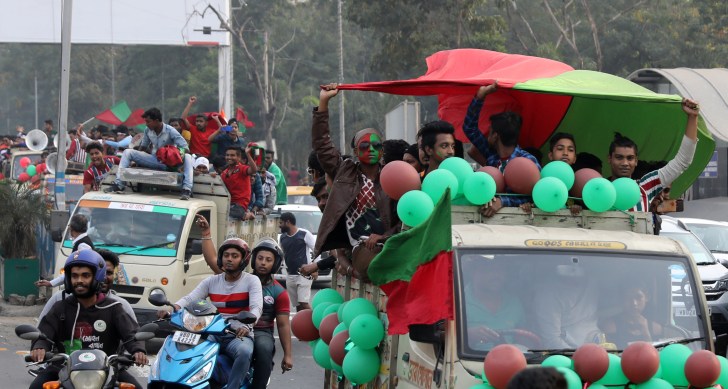 All positive factors aside, Bagan fans are still taking the merger with a pinch of salt. Express photo by Partha Paul.
All positive factors aside, Bagan fans are still taking the merger with a pinch of salt. Express photo by Partha Paul.
AIFF senior vice-president Subrata Dutta begs to differ. “To start with, IMG-Reliance, which is now known as the FSDL, is investing a huge amount of money in Indian football. Not only are they running the ISL, money that they give to the AIFF helps us organise all our tournaments and development programme including the I-League. So are they committing a sin? Aren’t they contributing to the development of Indian football?”
Dutta gives a low-down on the FSDL’s expenditure – around Rs 50 crore to the AIFF every year apart from hosting the ISL, which is roughly a Rs 100-crore business.
“You have to take into account the 10 ISL clubs also. If they have a Rs 40-crore budget each per season, then all combined, money spent is Rs 400 crore per season. So the FSDL has made Indian football a Rs 500-crore industry. Mind you, India’s current Fifa ranking is 108. And they are doing it knowing fully well that they would struggle to reach the break-even.”
Bagan official Debashis Dutta tries to allay the concerns.
“Since 1998, when Bagan had entered into a fifty-fifty shareholding partnership with the UB Group, the club’s football team has been run by a company. Back then it was United Mohun Bagan Private Limited. Following the UB Group’s exit, the company became Mohun Bagan Football Club (India) Private Limited. The club nominates directors to the company. The merger will not change the governance structure of the Mohun Bagan Athletic Club, for the club and its football team are run by two separate bodies. In fact, this will help us remodel ourselves in the way our next generation wants their football. This will eventually help us get among the top 10 clubs in Asia.”
On the 15th of every month, Sanjoy Sen used to get cold feet. He was the Bagan coach then and had been facing players on their payday. “Eventually the club paid every footballer, but salaries had been running on backlog and for me, it wasn’t an easy situation.” Sen was the Bagan head coach from 2014 to early 2018 before joining the ATK’s youth set-up.
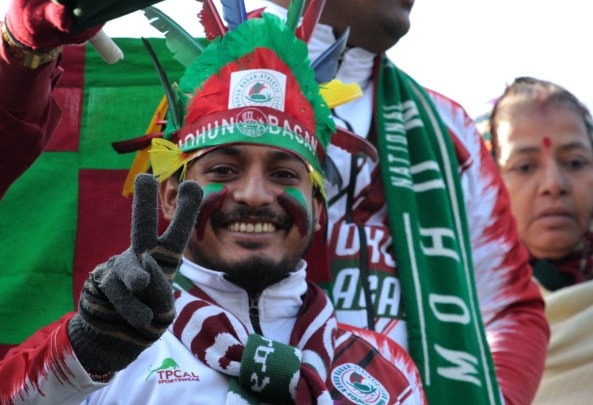 Bagan fans also have a warning for the football team’s new bosses; “Don’t be foolish enough to promote the ATK brand over our heritage.” Express Photo by Shuaib Masoodi.
Bagan fans also have a warning for the football team’s new bosses; “Don’t be foolish enough to promote the ATK brand over our heritage.” Express Photo by Shuaib Masoodi.
“Coming to the ISL was an eye-opener. At Bagan, I had repeatedly insisted on having a video analyst for the first-team to no avail. Here, our youth team has a video analyst and a physio. The whole thing is run professionally.”
Sen believes the merger is a win-win for everybody. “The ISL will get Bagan’s legacy. Bagan, in turn, will get the ISL and ATK’s professionalism. Credit to Mr Goenka, he has been developing his own brand, ATK. Still, he took Bagan under his wings because he cares for Kolkata football. His family has had a long connection with Bagan. He knows the club’s heritage.”
A lot of players would be temporarily unemployed following the merger. Very few from the current Bagan squad will graduate to the ISL. What will happen to those who are left out? “So many players have come to the ISL from the I-League. If a player is talented, he won’t be left out. It’s survival of the fittest,” Sen observes.
Players in the ISL also have the opportunity to be coached under some big names from Europe and Latin America. In a country where footballers start developing their ideas about different formations only after reaching the senior level, it’s a big plus. ATK had Jose Molina as their head coach during their title-winning campaign in 2016. Molina is now the sporting director of the Spanish football federation. Luis Enrique reports to him.
Bagan legend Subrata Bhattacharya brushes aside the foreign coach factor, in his indomitable style. “After all, the result will be a big zero. India won’t be able to beat China, Japan and Korea. Not even Myanmar. All we still have to show for will be victories against Sri Lanka, Bangladesh, Pakistan and Singapore. What the hell are the ‘top’ foreign coaches doing then? India became the Asian champions under an Indian coach, Rahim sahib.” Bhattacharya feels Bagan members should have risen to the occasion, contributing to the club through donations.
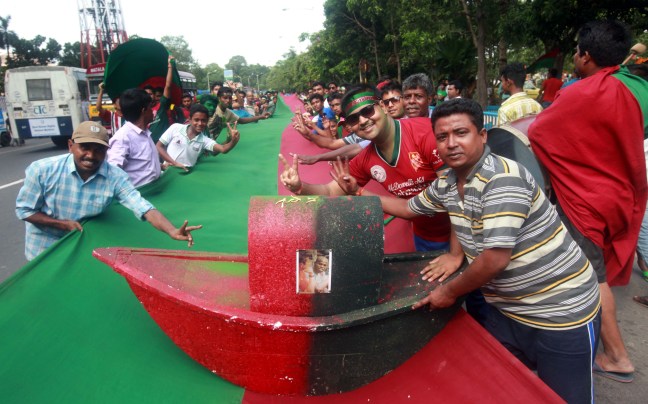 Mohun Bagan celebrated their maiden I-League triumph in 2015 with great fanfare at the club tent. 5,000 fans greeted the team at the Kolkata airport and then a motorbike procession led them to the club tent where celebrations began in jest. Green and maroon were the colours of the city and marquee player Pierre Boya described it as an “unbelievable experience”. Express Photo by Partha Paul
Mohun Bagan celebrated their maiden I-League triumph in 2015 with great fanfare at the club tent. 5,000 fans greeted the team at the Kolkata airport and then a motorbike procession led them to the club tent where celebrations began in jest. Green and maroon were the colours of the city and marquee player Pierre Boya described it as an “unbelievable experience”. Express Photo by Partha Paul
“Club members have a bigger role to play than just paying their annual subscription fee. If all the members had come forward and donated Rs 5,000 each, the financial crisis might have been averted. Maybe, the club wasn’t in a dire situation to take the merger route. When you are in extreme crisis, you look for survival. The Bagan officials probably had no other option,” Bhattacharya defends his logic.
Since 2014, when the UB Group left, the Bagan football team has been run almost singlehandedly by the club general secretary Swapan Sadhan (Tutu) Bose through his company. The club might have struggled for existence without its chief benefactor. “To use the word difficult would be subversion. Without Tutu da it would have been impossible,” Dutta confesses. Once the Bagan management decided to be part of the ISL, the club needed financial muscle. Annual expenditure for the football team to play in the I-League and other tournaments has had been roughly Rs 15 crore. To make an almost threefold jump, required to be in the ISL, investors had to be invited.
Skepticism notwithstanding, Bagan are now part of ISL, though the more familiar hyphen seems incomplete. The tagline in the English Premier League at the moment is, how Liverpool want Manchester United to be great again. Liverpool versus United remains the biggest rivalry in world football, along with Real Madrid versus Barcelona.
Bagan’s participation, with their giant fan-base, in the ISL from the next season onwards will be a huge value addition to the league. But Indian football needs their arch-rivals also in the same league. Bagan and East Bengal complement each other.
It is learnt that the FSDL played a major role in the Bagan-ATK merger.
Now, they are walking the extra mile to bring East Bengal into the fold.
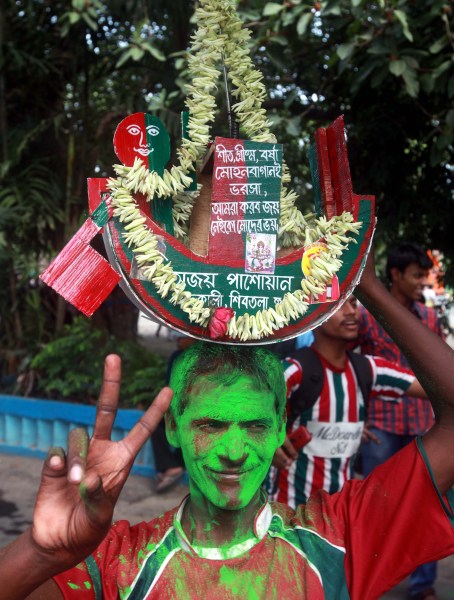 The Mohun Bagan faithful are hardly a flock of sheep that’ll obediently follow ATK into the lair of professionalism and modernity without asserting their identity in the ISL. Express Photo by Partha Paul. Kolkata. 01.06.15.
The Mohun Bagan faithful are hardly a flock of sheep that’ll obediently follow ATK into the lair of professionalism and modernity without asserting their identity in the ISL. Express Photo by Partha Paul. Kolkata. 01.06.15.
A BRIEF HISTORY
The beginning: On August 15, 1889 the club was established as Mohun Bagan Sporting Club, which was later changed to Mohun Bagan Athletic Club. The club crest, a country boat, signifies Bagan’s place of birth, in north Calcutta on banks of the river Hooghly.
First trophy: The Cooch Behar Cup in 1904.
The Immortal XI: Till this day, the 1911 IFA Shield final win (2-1) against East Yorkshire Regiment remains the finest moment. Bagan became a symbol nationalism in
pre-independent India.
Derby: The first match between Bagan and East Bengal was played on August 8, 1921, at the Cooch Behar Cup. The first Calcutta League derby was played on May 28, 1925. Till date 370 competitive matches have been played between the arch-rivals.
A jewel unearthed: In 1954, after eight years with the junior side, Chuni Goswami graduated to the senior team. The centre-forward went on to become Bagan and India’s greatest-ever footballer, captaining India to the Asian Games football gold in 1962.
Pele at Eden: The legendary Pele came to Calcutta in 1977 as a part of New York Cosmos on Bagan’s invitation. The friendly at Eden ended in a 2-2 draw.
Centenary: In 1989, the club celebrated its centenary, as then Prime Minister Rajiv Gandhi declared Bagan as the National Club of India. A postage stamp was released to mark the occasion.
Lifting ‘overseas embargo’: During the 1991-92 season, Bagan lifted their ‘overseas embargo’ and signed up Chima Okorie as their first-ever foreign player.




















